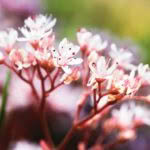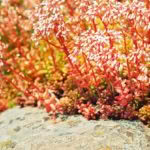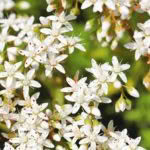5 creeping sedums to fill in a drought-tolerant garden
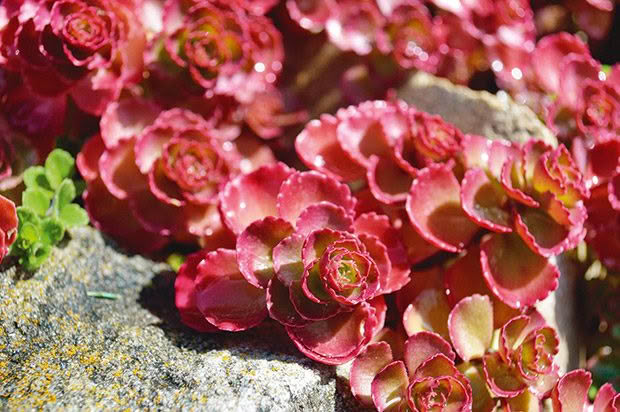
This sunshine-soaking plant is a favourite for European rooftops.
Words: Jenny Somervell
Creeping sedums are among the most versatile, drought-resistant, easy-to-grow perennials available. In Europe, they are the go-to rooftop plant.
They are evergreen to semi-evergreen. Slender, trailing stems have whorls of needle-like, toothed, or rounded leaves. These take root as they touch the soil, forming low, outward-spreading, ground-hugging carpets.
READ MORE: How to plant, grow and nurture sedum plants (the plant that grows against all odds)
Some have a draping form, which can soften the edge of a container or rock wall. The stem tips turn upwards, topped in early to mid-summer with clusters of small, starry flowers in yellow, white, or pink.
The striking foliage of yellow and variegated sedums can out-do early flowers in spring for colour. Others show fresh, green foliage, a flurry of flowers in summer, and then a show of pinkish, purplish-red, gold or orange foliage through autumn and winter.
HOW TO USE
Weave plants through other low or clump-forming perennials. They also soften hard lines along walkways and edges, and provide texture, colour and contrast.
Their thick growth excludes weeds and cools the ground, creating a living mulch. They’re an attractive and less aggressive alternative to more rampant groundcovers like ivy.
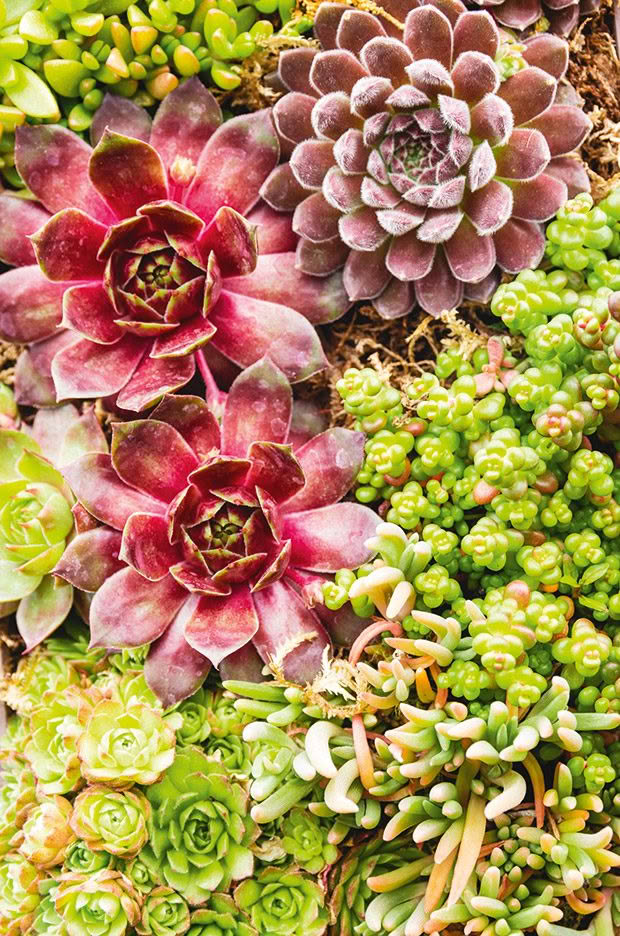
Most carpeting varieties will grow happily in full sun or light shade, and prefer lean, gravelly soil. However, some, like the woodland Sedum ternatum, will not tolerate drought.
5 CREEPING SEDUMS FOR HOT SPOTS
1. Orange stonecrop (Sedum kamtschaticus)
One of the best groundcover sedums for seasonal effects. Evergreen with slender, dark-green foliage in spring, red-stemmed, golden flowers from early summer, and stunning orange-red foliage in autumn which turns beet-red in winter.
2. Gold moss stonecrop (Sedum acre)
One of the easiest to grow, even in 5cm of soil. Bright green, triangular foliage on spreading, evergreen, ground-hugging plants. Gold-leaved form Aureum has fresh, gold-tipped foliage. Dry seedheads resemble driftwood in colour.
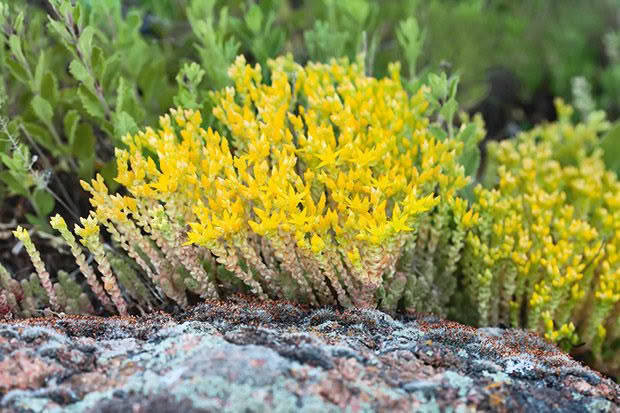
3. Two row stonecrop (Sedum spurium Fuldaglut [Fireglow] and other cultivars)
Flat, rounded leaves are bronze-red, tending to red in full sun, with green centres. Pretty ruby flowers on 12cm stems. Foliage is semi-evergreen; older foliage falls off in autumn/winter. Beautiful with silver-leaved plants.
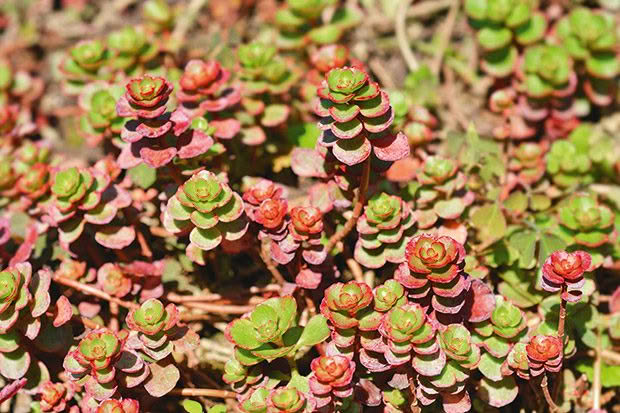
4. Jenny’s stonecrop (Petrosedum rupestre, syn. S. rupestre, S reflexum)
Great for year-round colour. Vigorous, spreading habit and a superb container plant. In winter, the whorled, needle-like foliage develops red tips and highlights, and summer flowers are bright yellow.The variety Angelina has golden-yellow foliage, turning copper-orange in winter. For a striking display, pair yellows with pinks, blues and purples, reds and oranges or crisp silver and white.
5. Sedum album
Attractive, great for colour effects. The foliage is finger-shaped, with seasonal red-to-green colouration. White flowers in flattish clusters in summer. Roots easily from dropped leaves.
6 WAYS TO MIX SEDUMS IN YOUR GARDEN
1. Purple and maroon-leaved sedums are gorgeous with silver-grays such as lambs’ ears (Stachys byzantina), Artemisia Silver Mound, other blue-leaved sedums, or white flowers such as Echinacea White Swan. They can be stunning when paired with gold flowers or leaves.
2. The softer, muted bluish-foliaged sedums enhance virtually any colour. Green companions will stand out more, pastels will be prettier, and hot colours will be toned down.
3. Blue-leaved forms also look great with short, blue grasses like Festuca ovina and blue oat grass (Helictotrichon sempervirens). Other grasses that go well include Calamagrostis, Deschampsia, Eragrostis and Molinia (see the November issue of NZ Lifestyle Block for more great grass options).
4. The stout stems and flower clusters of Hylotelephium spectabile, sieboldii and telephium have bold, structural appeal. You can create a richly-coloured autumn display by weaving them among other bold, late-flowering perennials such as Veronicastrum, tall verbenas, Eupatorium maculatum, Japanese anemones, Echinacea magnus and geraniums.
5. Echinacea, with their bold, rich, pink-purple flowers, are a perfect partner, enjoying the same sunny, well-drained conditions, and flowering well into autumn.
6. Finely-textured ornamental grasses contrast with the rounded, fleshy sedum leaves, and are natural, easy-care garden companions. Sedums also go well with Carex comans, Festuca glauca, Miscanthus sinensis and Anemanthele lessoniana (NZ wind grass).
Love this story? Subscribe now!
READ MORE
 This article first appeared in NZ Lifestyle Block Magazine.
This article first appeared in NZ Lifestyle Block Magazine.
